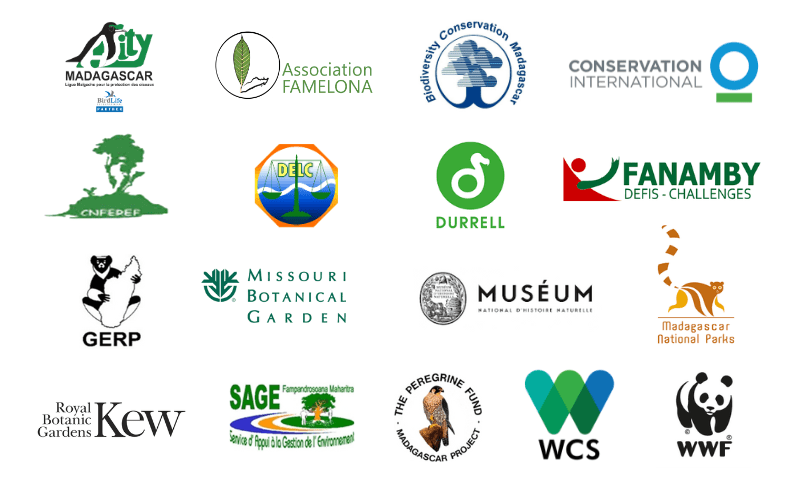
Protected area managers, as conservation experts, play a crucial role in preserving the biodiversity of the “Big Island” of Madagascar. Who are they, and what is their purpose?
Protected Area Managers: A Community of Experts
The livelihoods of communities depend on nature and biodiversity. The beauty and uniqueness of Madagascar’s biodiversity make it exceptionally rich, yet sadly threatened. Currently, protected areas represent the best means of conserving biodiversity within its natural habitats. National parks, nature reserves, community conservation areas, and more are part of the solution. According to a 2022 study by FAPBM, over 70% of Madagascar’s documented biodiversity is found within protected areas.
Madagascar National Parks (MNP), along with NGOs and/or associations run the 123 protected areas within the Madagascar System of Protected Areas of (SAPM). These organizations dedicated to environmental resource protection work with the government and local communities to preserve species and ecosystems. Their expertise and skills cover a wide range of areas, including biodiversity research and conservation, development support, administration and finance, communication, and more. In addition, the knowledge and involvement of local communities contribute to these efforts.
Who are these managers, and how do they intervene to protect our ecosystems?

Key protected area managers in Madagascar
There are numerous conservation NGOs in Madagascar, with some of the main ones being Madagascar National Parks, WWF, and Conservation International.
Madagascar National Parks is a Malagasy non-profit association that has been entrusted by the government since 1991 to manage the 43 protected areas in Madagascar, covering a total area of 2.6 million hectares. MNP’s mission is to establish, conserve, and sustainably manage a national network of parks and reserves that represent Madagascar’s unique biological diversity and natural heritage. With three decades of experience, MNP is recognized by its financial and technical partners for its effective management of the park and reserve network. The tools it employs, developed on the basis of scientifically proven and internationally adopted methodologies, ensure the quality of its actions. MNP maintains a sound management with annual external audits and ISO 9000 certification.
WWF (World Wide Fund for Nature) is the world’s leading nature conservation organisation. Its mission is to stop the degradation of the global environment and build a future where humans live in harmony with nature. To achieve this, WWF seeks to implement practical and sustainable solutions to urgent and emerging environmental problems worldwide, partnering with local communities, businesses, governments, international organizations, and NGOs. Present in Madagascar since 1963, WWF focuses its work on four priority intervention areas including several protected areas: the marine landscape of the Mozambique Channel, the landscapes of the Northern Highlands, the terrestrial landscape of Manambolo Tsiribihina, and the terrestrial and marine landscape of Mahafaly.
Conservation International works to preserve nature for current and future generations, aiming for a healthier, more prosperous, and sustainably productive planet. They have been present in Madagascar since 1990. With a solid foundation in science, partnerships, and on-the-ground demonstrations, Conservation International helps societies in responsibly and sustainably manner, taking care of our global biodiversity and nature for the benefit of humanity. The government of Madagascar has delegated to Conservation International the management of the Ankeniheny-Zahamena and Ambositra-Vondrozo corridors, as well as the protected marine area of Ambodivahibe.

Sustainable financing for protected area managers
The financing of the System of Protected Areas of Madagascar remains an issue. Revenue comes mainly from tourism, but uncertainties persist due to political instability and recurring crises in the country. Emergency situations, such as the COVID-19 pandemic, further exacerbate the uncertainty surrounding this income source.
Despite these challenges, protected area managers has come to mobilise international funding for biodiversity conservation. However, this funding is often inconsistent. It is usually limited to a period of 3 to 5 years, with varying amounts depending on donor availability. Moreover, funds may be allocated to specific budget items or actions, challenging long-term projections.

Madagascar Protected Areas and Biodiversity Fund (FAPBM) was established in 2005 on the initiative of the Government of Madagascar and international conservation organisations such as WWF and Conservation International. As a private Malagasy trust fund, FAPBM’s mission is to support biodiversity conservation by promoting and financing the expansion, creation, protection, and improvement of SAPM. In doing so, it contributes to the maintenance of ecosystem services, climate change mitigation, and the well-being of communities. FAPBM provides various financing instruments to support protected area managers, including annual grants, emergency grants, and strengthening support grants. In 2023, FAPBM is funding 16 conservation organisations for 64 protected areas.
Conservation organisations are at the forefront of the survival and preservation of our ecosystems. The work of their experts on the ground is crucial for environmental protection. Let’s support them.




